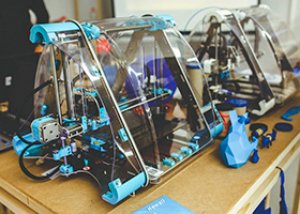
All iLive content is medically reviewed or fact checked to ensure as much factual accuracy as possible.
We have strict sourcing guidelines and only link to reputable media sites, academic research institutions and, whenever possible, medically peer reviewed studies. Note that the numbers in parentheses ([1], [2], etc.) are clickable links to these studies.
If you feel that any of our content is inaccurate, out-of-date, or otherwise questionable, please select it and press Ctrl + Enter.
An artificial cornea has been printed using a 3D printer
Last reviewed: 02.07.2025
 ">
">Scientists from the British University of Newcastle have been able to reproduce the human cornea – the transparent cornea of the eye – using a 3D printer.
The cornea is the anterior, more convex, transparent element of the eyeball, which is one of the eye's light-refracting media. Normally, such an element is transparent, shiny, smooth, has a spherical shape and is highly sensitive. The cornea consists of five layers.
Traumatic injuries, infectious lesions and congenital pathologies of the cornea can impair visual function, up to and including complete loss of vision. This complication could be avoided if there was a possibility of transplanting a donor cornea. But there are very few such transplant materials, so it is not possible to help all patients. According to information provided by the World Health Organization, about five million people in the world have lost their vision function precisely due to diseases and damage to the cornea.
The latest method presented by British researchers is not yet suitable for use in clinical practice. However, in the future, after its improvement, millions of patients will be able to preserve and even restore their lost vision.
The experts admitted that it was very problematic to select the optimal composition of the biological dye for 3D printing. The artificially recreated cornea must maintain a structured shape, so it must be both thin and elastic. To achieve the necessary parameters, a group of scientists resorted to using the gelatinous polymer alginate, collagen protein substance and stem cells.
This technology does not fully ensure the recreation of the required number of donor corneas. They serve as the main material for obtaining the necessary stem cells. However, with the help of the new method, it will be possible to obtain fifty artificially created ones from one cornea.
After taking pictures of the eyeball of one of the volunteers, the specialists recreated a three-dimensional corneal model. The resulting material looks like an elastic contact lens covered with a mucous substance.
It will take a long time before artificially created corneas are implanted in patients. A group of scientists must first improve the printing process, and then laboratory tests will be conducted with animals. However, we can already confidently talk about a breakthrough in this ophthalmological area, because researchers have previously failed to recreate a three-dimensional structure close to a real cornea in both configuration and composition using 3D printing.
The new technique is described in detail in the scientific journal Experimental Eye Research (https://www.sciencedirect.com/science/article/pii/S0014483518302124).
